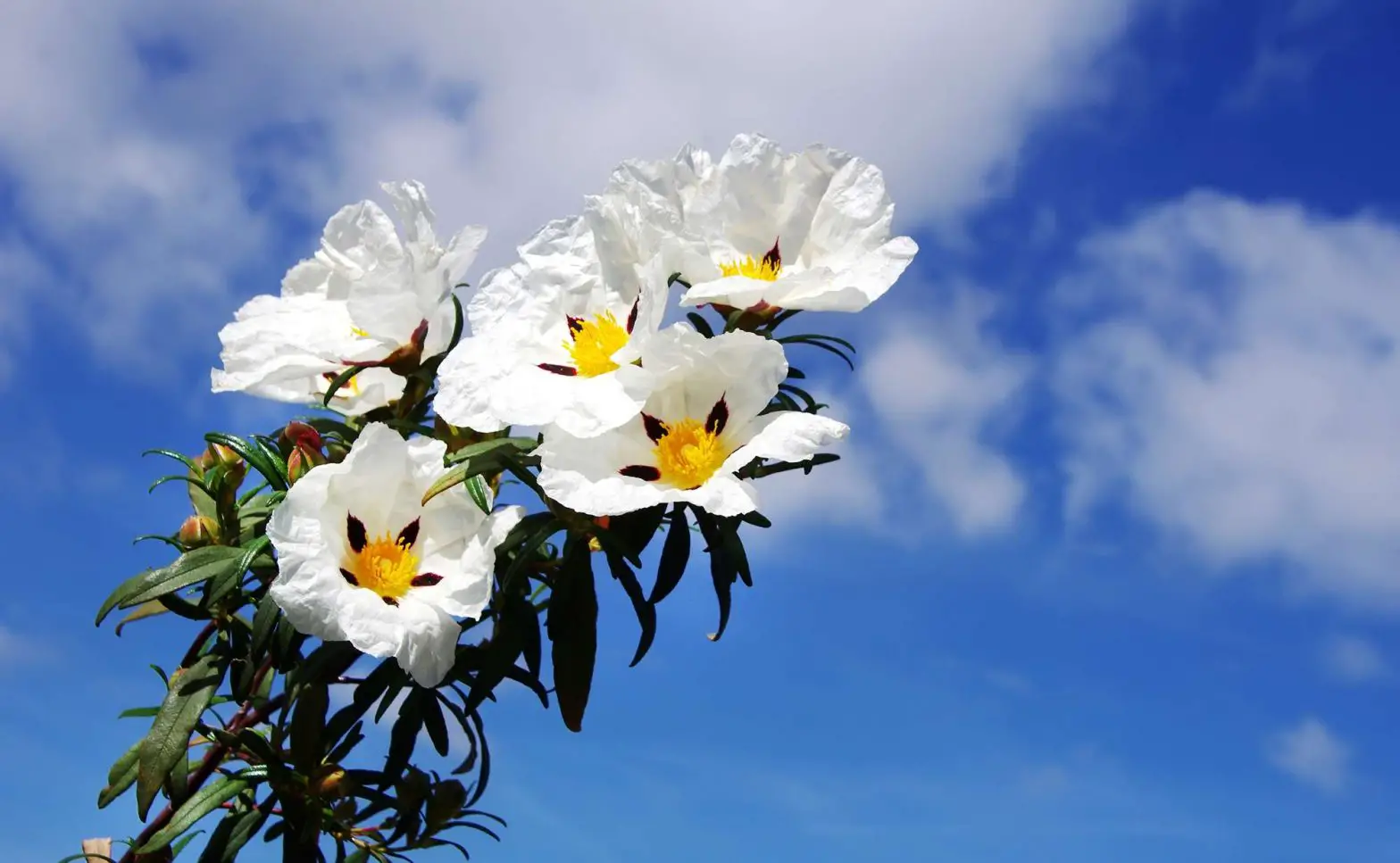Labdanum (pronounced lab·da·nuhm) is a floral fragrance note that adds an amber and honeyed tone to perfumes.
Labdanum, a base note and master ingredient in oriental scents, has an amber and honeyed smell with fruity hints of plum and a slightly woody, somewhat leathery undertone to it.
Picture yourself outdoors on a quiet fall evening, the dancing flames from the creaking campfire keeping you warm as the comforting scent of your old leather jacket and the trusty horse saddle you left on the ground somewhere behind you gives you the sense of calm and coziness.
That’s, in a nutshell, what labdanum smells like. Depending on how it’s paired, it can come off as captivatingly sweet and candied or deeply animalistic and leathery.
The gift from the small, wild-growing Mediterranean shrubs Cistus ladanifer (Spain, Portugal) and Cistus creticus (Greece, Cyprus), labdanum is a greyish-brown resin that’s obtained by boiling their leaves and twigs until they yield a sticky, thick, gum-like substance.
These two shrubs are commonly known by their household name, the “rock-rose.”
Today, Spain is by far the biggest producer of labdanum. Botanists haven’t quite put their fingers on their exact origin, but they general consensus among them is that they most probably originated in the Middle East.
In antiquity, labdanum was collected by shepherds, who’d comb the beards and thighs of the goats and sheep in their herds. During the day, the animals would graze on the rock-rose as they strolled through the fields to look for supper.
The shepherds then sold it to tradesmen along the Mediterranean coast, who’d preach about its aroma and healing qualities to the perfumers and healers of the Middle East.
Labdanum’s earliest recorded uses as a fragrance ingredient date back three thousand years ago to the civilization of Ancient Egypt, when it was used to make kyphi incense. Kyphi incense was an aromatic material used for ceremonial purposes, which gave off fragrant smoke when burned.
The Book of Genesis, the first book of the Hebrew Bible and the Christian Old Testament, talks about labdanum being carried to Egypt from Canaan, a region on the territories of modern-day Israel, the West Bank and Gaza, Jordan, and the southern portions of Syria and Lebanon.
Labdanum is used by perfumers not only because of its scent—which mimics that of ambergris, a rare and costly perfume ingredient that comes from the sperm whale’s digestive tract—but because it helps to stabilize and preserve other ingredients, extending the shelf life of perfumes.
To be added as a natural ingredient to perfumes, the labdanum gum is turned into labdanum oil with the help of a solvent. On average, it takes 2,200 lb (1,000 kg) of plant material to yield 8.8 lb (4 kg) of labdanum oil.

